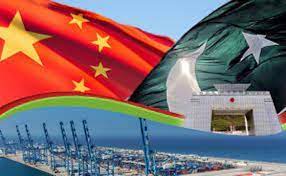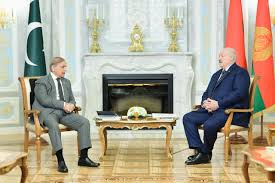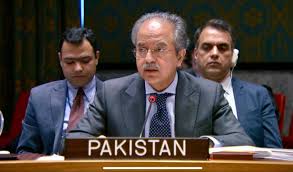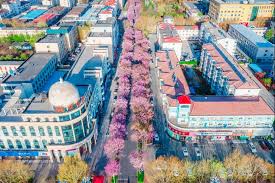CPEC moves to second phase of high-level development, with focus on capacity, tech cooperation: Experts

Beijing: As President Xi Jinping met with visiting Pakistani Prime Minister Muhammad Shehbaz Sharif to further consolidate the bilateral ironclad friendship, the two countries will set in motion a flurry of projects of the China-Pakistan Economic Corridor (CPEC) under the framework of the Belt and Road Initiative (BRI), including the construction of auxiliary infrastructure for Gwadar Port and a high-speed rail project connecting Pakistan’s largest city of Karachi to Peshawar.
Business representatives and industry observers said the economic cooperation highlights yielded by the visit underscore that the construction of CEPC has been upgraded from phase one, which focuses on addressing fundamental issues involving power shortages and infrastructure connectivity, to phase two which aims to facilitate capacity cooperation, stimulate indigenous economic drives and speed up the South Asian country’s push to modernize.
The Pakistani side has also vowed to step up security measures, further providing a guarantee to the safety of Chinese personnel and China-invested projects – a pledge entrusted by Chinese business representatives which will pave way for the efficient implementation of flagship projects in CPEC’s second phase.
The fruitful results achieved by the visit also speak volumes of the all-weather friendship and mutually beneficial economic ties between China and Pakistan, which could not be swayed by the empty promises made by the US that neither invested extensively in Pakistan nor reduced barriers for Pakistan exports, analysts noted.
According to a joint statement issued after the bilateral meeting, the two sides agreed to build upon the leadership consensus and to advance the process of the ML-1 project’s earliest implementation. The two sides also agreed to actively advance the Karachi Circular Railway, which was an urgent requirement for Pakistan’s biggest city.
“The ML-1 linking Karachi with Peshawar is a railway corridor connecting Pakistan’s southern region with the north. With a length of about 1,730 kilometers, it will attract close to $10 billion in investment. Chinese enterprises have done a lot of preliminary studies and work on the project, laying a solid foundation for its efficient implementation,” Xiao Hua, the chairman of state-owned China State Construction’s Pakistani company, told the Global Times.
Xiao noted the project, along with the Karachi Circular Railway, is of key “strategic and landmark” importance to Pakistan in improving its basic infrastructure, and all Chinese enterprises involved are expecting as early implementation as possible.
According to a statement on the website of China’s Ministry of Commerce, the designed passenger train speed of ML-1 is 160 kilometers an hour, with freight trains capped at 120 kilometers an hour.
Zhou Rong, a senior researcher from the Chongyang Institute for Financial Studies at the Renmin University of China, told the Global Times that the two rail lines represent a significant push in Pakistan cities’ modernization agenda. “In Pakistan, the highest railway speed is around 140 kilometers an hour, and only several rail lines operate above 100 kilometers per hour,” Zhou said while noting that in addition to upgrading train lines, Pakistan has significant demand for auxiliary purchases such as train coaches and signal lights.
The joint statement also noted that both sides expressed satisfaction with the completion of key projects of Gwadar port and agreed to speed up progress on other related projects of the Gwadar port and free zone.
Zhou said that as a next step, efforts will be scaled up in such sectors as building an accompanying logistic center, a modern fishing center, a ship repair center, and constructing more terminals for docking cruise ships and oil tankers, to build the port into a strategic transportation hub between the Indian Ocean and the Persian Gulf.
To date, the first phase of the Gwadar free zone- with an investment of over 3 billion yuan($410.7 million) – has been completed, and construction of the second phase has been initiated in July 2021, with an area of about 36 times of the first phase.
Wang Jie, the executive vice president of the Chinese Enterprise Association in Pakistan, told the Global Times that Sharif’s visit will lead to bilateral cooperation heading toward “diversification, modernization, and sustainable development.”
“In the second phase, the two sides could deepen cooperation in industries, modernization, informational technology, e-commerce, and new energy such as photovoltaic,” Wang stressed.
According to the joint statement, in line with the leadership’s consensus to accelerate cooperation in the areas of agriculture, mining, IT, and socio-economic development under the CPEC, the two sides agreed to further build on the health, industry, digital and green corridors launched earlier this year and carry out relevant cooperation.
The two sides also agreed to actively promote the implementation of the Framework Agreement on Industrial Cooperation to support Pakistan’s industrial development.
“Moving to the second phase, industrial cooperation and technological cooperation under BRI will gain momentum. And Chinese enterprises are set to play an outsized role in stimulating the ‘blood-making’ ability of the Pakistani economy. We will utilize our advantageous resources and explore more innovative cooperation models to contribute to local social economic development,” Xiao said.
Zhou explained that the Pakistani economy is in a key transition period toward modernization and innovation. “That means it needs Chinese experience, tech-knowhow, and expertise to help make the big stride, and that’s the strategic direction toward which future cooperation moves,” he noted.
The CPEC has played a key leading role in the development of clean energy such as wind power and solar energy in Pakistan, according to a statement PowerChina, a state-owned energy construction company, sent to the Global Times. And the success of several wind power projects invested in by Chinese firms has made global investors see the broad prospects for wind power development in Pakistan.
At present, the company has completed the construction of 22 wind power projects in Pakistan, with a total installed capacity of 1.14 million kilowatts and a market share of 60 percent.
“In the field of green energy, Chinese companies have deeply impressed Pakistani investors with their profound technological knowledge and construction efficiency,” said Danish Hanif, a site manager for PowerChina’s construction project group in Pakistan.
Business insiders stressed that the CPEC’s upgrade to the second phase is built upon the fruitful results achieved in phase one.
Since the launch of CPEC in 2013, it has brought $25.4 billion in investment to Pakistan, covering industries including energy, basic infrastructure, finance, telecommunication, mineral, and textile. At their peak, Chinese enterprises created 75,000 local jobs for Pakistanis, and supported the expansion of Pakistan’s GDP for consecutive years, Wang said.
According to a statement China State Construction sent to the Global Times, the Peshawar-Karachi Motorway (PKM) project, the largest transportation project under CPEC, has successfully transported more than 10 million vehicles since putting into operation in December 2020. The motorway reduced traveling time between the two cities to four hours from 11 hours.
“Unlike the US who aims to improve relations with Pakistan based on a geopolitical gambit mindset, relations between China and Pakistan are ‘as solid as rocks’- based on substantial investment, consistent aid and help in times of need, and honored commitment to reduce market entries for Pakistani products,” Zhou stressed, noting that China-Pakistan cooperation also set an example of high-level partnership under BRI for the world.
The Chinese side has expressed willingness to actively support the Pakistani side in expanding exports to China and welcomed quality goods including food and agricultural products from Pakistan to enter the Chinese market, reads the joint statement.





